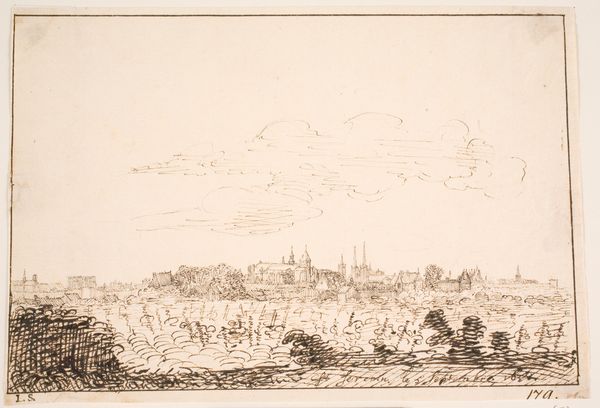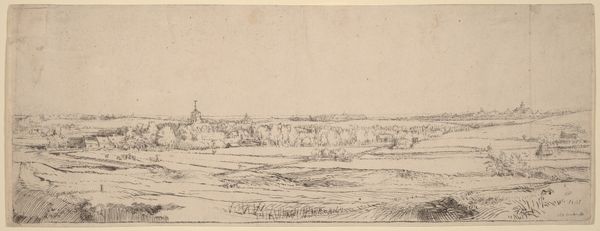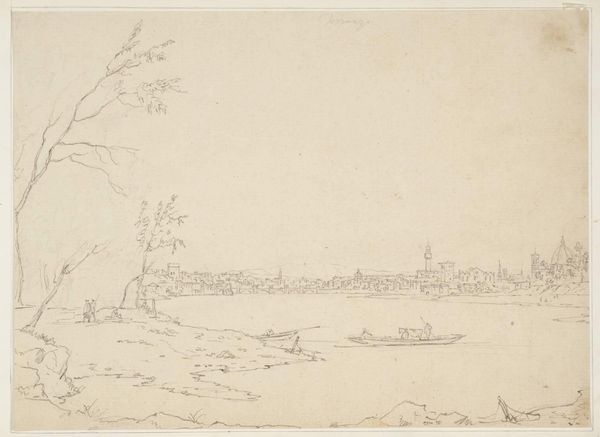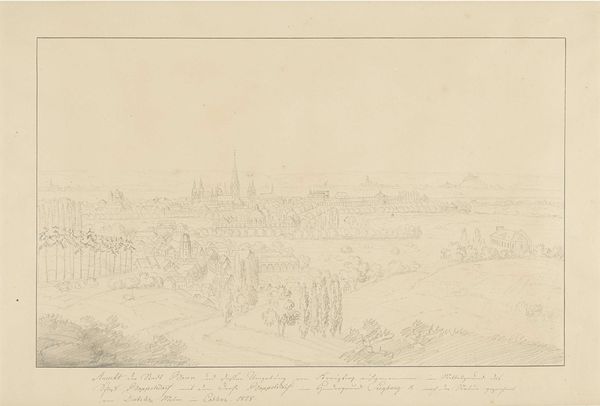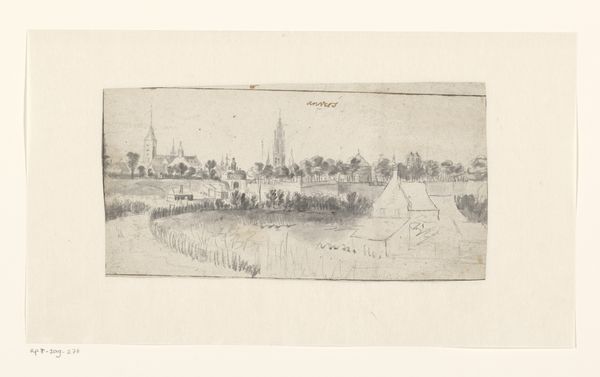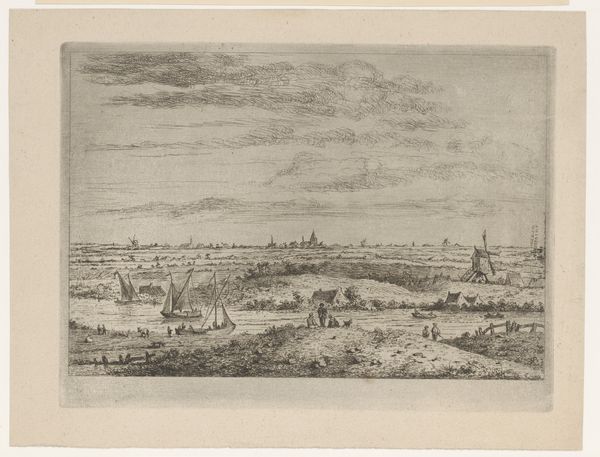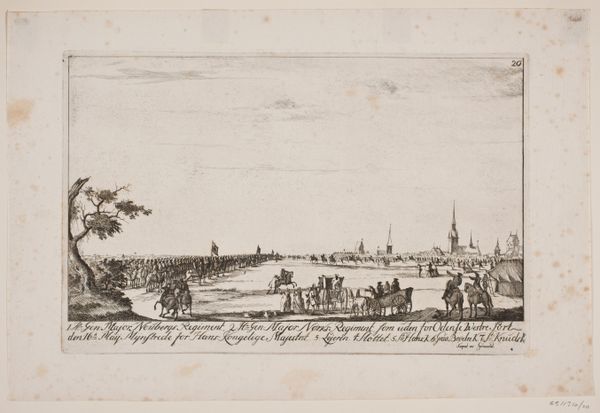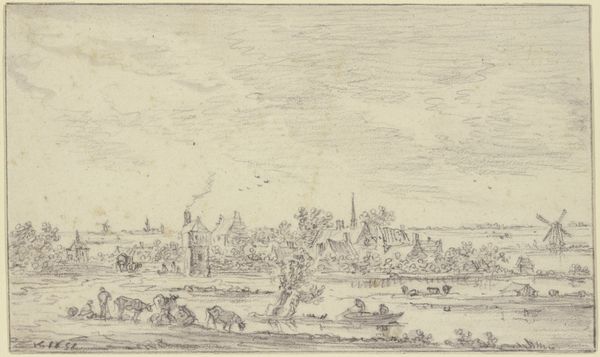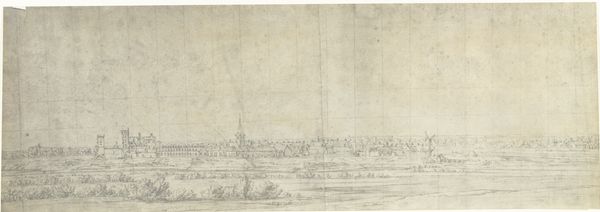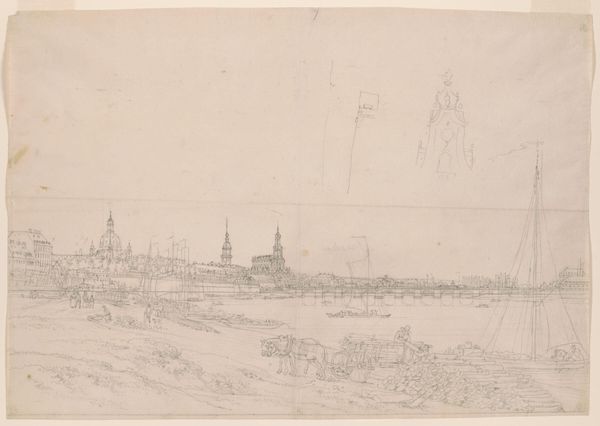
drawing, etching, pencil
#
drawing
#
etching
#
landscape
#
etching
#
pencil
Dimensions: 192 mm (height) x 266 mm (width) (bladmaal)
Editor: Here we have "Landscape with a View of Bordeaux," a drawing made with etching and pencil, created sometime between 1638 and 1649. It’s so delicate, almost ephemeral. What strikes you when you look at this work? Curator: What strikes me is the raw, almost industrial quality beneath its delicate veneer. Look at the etches—they're not just lines, but the residue of a process, the trace of labor. We tend to see "landscape" as a purely aesthetic category, but here, the artist shows the impact of human work on shaping even what we perceive as "nature." Consider what materials would have been required and from where these materials would have been sourced in the 17th century. Editor: So you're saying the focus isn't just on the scene, but also the materials used to create it? Curator: Precisely. And how those materials connect to a larger system of production and consumption. Who mined the graphite? Who crafted the etching plate? Art isn’t created in a vacuum; it’s the product of many hands, many processes. Editor: I see what you mean. The seemingly simple landscape suddenly becomes more complex, almost like a document of its own making. The starkness becomes very powerful. Curator: It forces us to think about the hidden labor that goes into even the most seemingly innocent landscape. It asks: What does it mean to represent "nature" when "nature" itself is so thoroughly mediated by human activity? Editor: That's a great question! I’ll definitely be considering the work behind the work when I look at art now. Curator: Excellent! Art is a mirror reflecting social and material relations.
Comments
No comments
Be the first to comment and join the conversation on the ultimate creative platform.
